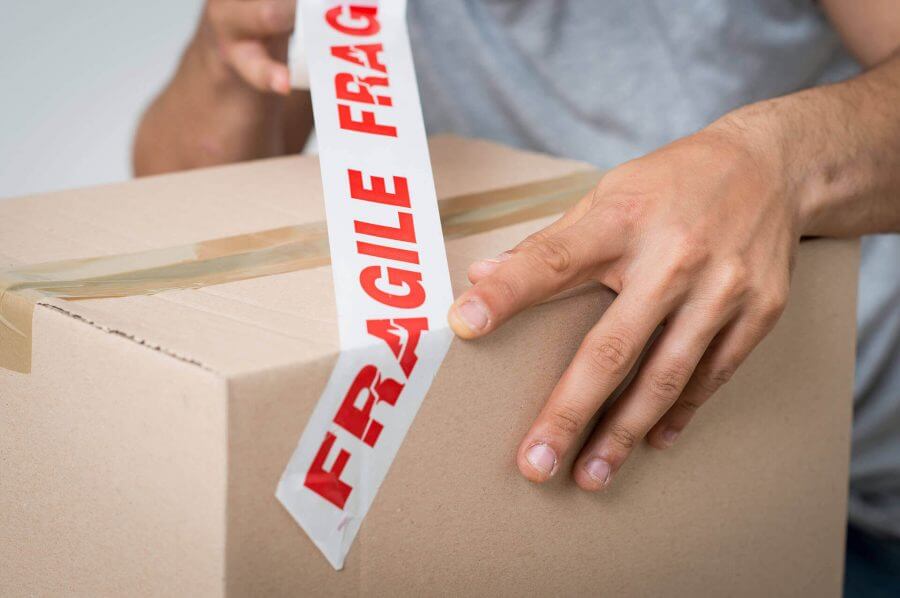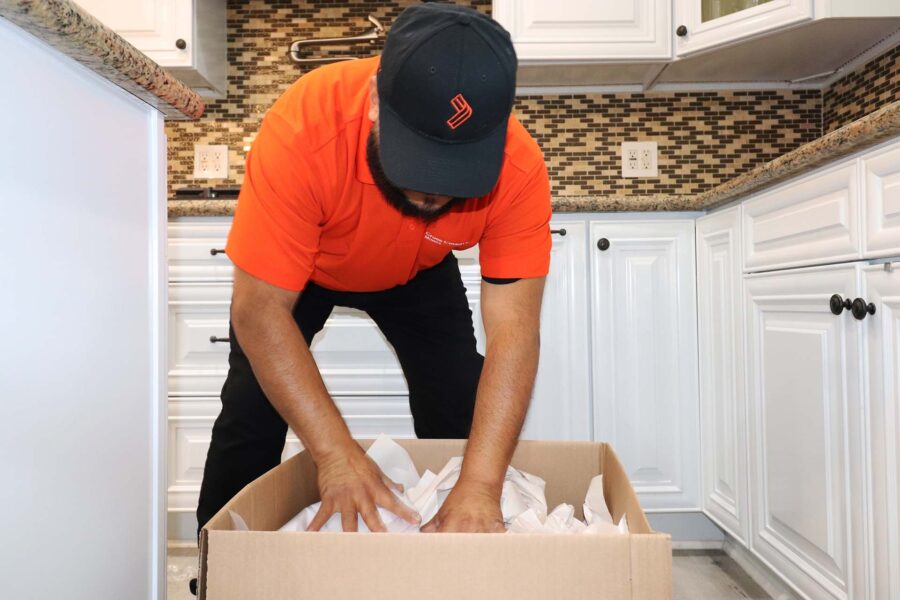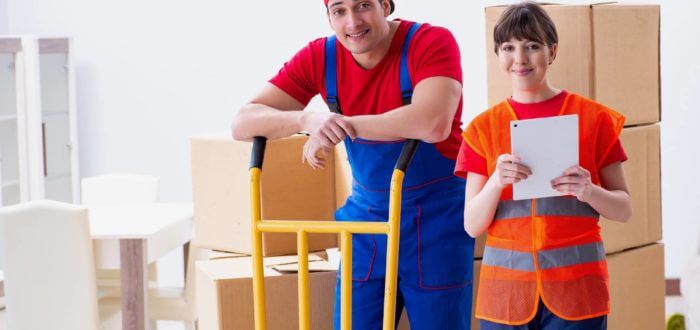

How to Pack Liquids for Moving Across the Country – A Leak-Proof Guide
Posted in How-to on June 19, 2024
Moving across the country is an exciting adventure, but the preparations for relocation can be demanding, especially when it comes to transporting liquids. Knowing how to pack liquids for moving is crucial to prevent leaks and spills that could damage your belongings. In this guide, we’ll provide you with essential tips and techniques to ensure all fluids are packed securely and transported safely to your new home.
How to Pack Liquids?
Safe liquid packing for a move requires careful preparation to prevent leaks and spills. Start by sealing each container tightly and placing it in a plastic bag for adequate protection. Use packing tape to secure the bag’s opening.
For added security, wrap the containers in bubble wrap or towels. Place them upright in a sturdy box, filling any gaps with crumbled packing paper or foam peanuts to prevent shifting. Label the box as “Fragile” and “This Side Up” to ensure careful handling. By following these steps, you can pack efficiently and minimize the risk of damage during your move.
Identifying Liquids Suitable for Moving Cross-Country
When relocating to a new state, identifying suitable fluids for transport is crucial – many of those that can be found in a household are on the list of items movers won’t move. First, consider the toxicity of the liquid in question. Avoid packing hazardous substances like pesticides, bleach, or other chemicals that pose risks during transport – get rid of these according to local regulations. Also, check state laws regarding the shipping of certain liquid substances, especially alcohol, which may have restrictions.
Assess whether the liquid is essential enough to justify the effort and risk of transporting it. Expensive perfumes or cooking oils may be worth the trouble, whereas common household cleaners may not – use them for move-out cleaning and dispose of them.
It’s important to consult your chosen long-distance moving company about their policies on transporting liquid substances, as many companies have strict guidelines or prohibitions to ensure safety and compliance with regulations. This step helps avoid last-minute surprises and ensures a smoother, more efficient relocation.
The Decluttering Stage – Disposing of Liquid Containers
For liquid containers that cannot be moved, consider purging or donating them. Dispose of hazardous items at appropriate facilities, while non-hazardous items can be given to friends, family, or charities. To prevent leaks, ensure all lids are securely sealed and use tape around the lids for extra security.

Necessary Packing Supplies for Liquids
When packing liquid containers, preventing leaks and spills is the key part of relocation preparation. Having the right packing supplies is essential for ensuring all fluids are safely transported. For eco-friendly materials, consider using biodegradable foam peanuts, recyclable plastic sealable bags, and reusable containers. Choosing these helps minimize environmental impact while ensuring your belongings are moved safely. Here’s a list of additional packing materials you’ll need:
- Absorbent pads,
- Sturdy boxes,
- Packaging tape,
- Bubble wrap, packing paper, or towels,
- Markers or labels for boxes.
Packing Techniques for Fluids
So, how to pack liquids for shipping? When packing household liquids such as wine bottles, beauty products, and food oils, begin by ensuring each container is sealed tightly. Use tape around the lids for extra security. Place each container in a plastic sealable bag to contain potential leaks. Wrap the bagged containers in packing paper and bubble wrap or towels.
For hazardous or flammable substances allowed for transport, ensure they are in their original, clearly labeled containers and follow any additional guidelines provided by authorities.
Creating Leak-Proof Layers for Preventing Spills During a Move
If you’re worried about spills, a relocation hack you can use is to create multiple leak-proof layers by double-bagging each liquid container. Place the container in one sealable bag, seal it, and then put that bag into another sealable bag. This extra layer reduces the risk of leaks escaping.
You can also use secondary containment methods, such as placing the double-bagged containers into a large, sturdy plastic bin. Line the bin with absorbent pads to catch any leaks that might still occur. These wrapping strategies ensure that even if a container leaks, the spill is contained and does not damage other items.
Placing Liquids in Boxes and Securing Them in Place
When placing items in boxes, ensure they are upright and surrounded by cushioning material. Use bubble wrap, towels, or packing paper to fill any gaps around the containers. This prevents movement and reduces the risk of breakage. Ensure the box is sturdy and can support the weight of the liquids without collapsing.
Labeling and Organizing Containers
Label each container clearly with the type of liquid and any specific handling instructions, such as “Fragile,” “Flammable,” or “This Side Up.” This helps movers and yourself know how to handle each item properly when loading and unloading from a relocation truck. When organizing boxes, group them by room or type of liquid for easier unpacking after relocation.
For instance, keep all bathroom liquids together and separate from kitchen oils. Use color-coded labels or markers to differentiate between different rooms or types of liquids. This organization simplifies the unpacking process and ensures you can quickly find and store each item in its appropriate place in your new home.

Transportation and Storage Strategies You Should Know
Loading liquid containers into a moving truck requires careful planning to ensure stability and safety. Place heavier containers on the bottom and lighter ones on top to prevent shifting. Use sturdy boxes and fill any gaps with packing material to avoid movement during transit. Arrange boxes tightly together, leaving no space for them to tip over.
Temperature control is crucial for certain liquids. Avoid exposing them to extreme conditions by not leaving them in a hot or cold truck for extended periods. If possible, transport temperature-sensitive liquids in a climate-controlled vehicle. Keep a relocation inventory of all liquids and their storage requirements to ensure they are appropriately handled during shipping.
Professional Movers and Liquid Transport – How Long-Distance Movers Ensure Safe Transport
Professional relocation companies like Cross Country Movers are experienced in transporting liquids safely. They follow strict guidelines and use specialized equipment to handle liquid substances. Movers typically use high-quality, leak-proof containers and double-bagging techniques to prevent spills.
They also ensure that all containers are sealed tightly and packed upright in well-cushioned boxes. They provide clear labeling for all boxes, indicating the type of liquid and handling instructions. Movers can also use climate-controlled trucks to maintain appropriate temperatures for sensitive liquids, ensuring they remain stable throughout the journey.

Unpacking at Your New Home
When unpacking at your new home, prioritize safety and check for any damage. Begin by placing boxes in the appropriate rooms based on their labels. Carefully open each box and inspect the containers for leaks or damage. Handle all liquids gently to avoid spills.
If you notice any leaks, clean them up immediately using absorbent materials and dispose of any damaged containers according to local regulations. Ensure that each liquid is stored in a safe, appropriate place, away from children and pets.
How to Dispose of or Recycle Containers That Are No Longer Needed
Proper disposal or recycling of containers is essential for environmental responsibility. Empty plastic and glass containers can usually be recycled – check your local recycling guidelines for specifics. For hazardous materials, follow local regulations for disposal, often involving designated drop-off points or special collection services. Clean and dry containers before recycling to avoid contamination. For reusable containers, consider repurposing them for storage or donating them if they are in good condition.

Contact Cross Country Movers – Let Our Team Help You Pack and Relocate Smoothly to Your New Home
Moving across the country can be a complex and stressful process, but with our professional cross-country moving services, it doesn’t have to be. At Cross Country Movers, we specialize in ensuring a smooth and efficient relocation experience.
From expert packing assistance to safe transportation to your new home, our experienced movers handle every detail. Let us take the hassle out of your move so you can focus on settling into your new home. Contact us today for a seamless moving journey tailored to your needs.
Frequently Asked Questions About Packing Liquids
How Can I Prevent My Liquids From Leaking During a Move?
To prevent leaks during shipping, start by tightly sealing all liquid containers and using packing tape around the lids for an extra layer of security. Place each container in a resealable plastic bag to contain any potential leaks, and for added protection, double-bag the containers.
Next, wrap the containers in bubble wrap or towels to cushion them against any impacts during transit. Use sturdy, durable boxes to pack these wrapped containers, and fill any gaps inside the box with packaging material such as foam peanuts, crumpled paper, or additional bubble wrap.
What Should I Do if a Liquid Spills in the Moving Truck?
If liquid spills in the moving truck, act quickly to isolate the spill area to prevent the liquid from spreading to other items. Use absorbent materials, such as paper towels, cloths, or special spill pads, to soak up as much of the liquid as possible. Clean the area thoroughly with appropriate cleaning agents to remove any residue and prevent stains or odors.
Are There Specific Packing Materials Recommended for Fragile Liquid Containers?
When packing fragile liquid containers, it’s essential to use specific materials to ensure their safety. Start by placing the containers in leak-proof plastic bags and double-bag them for added security. Wrap each container in bubble wrap or foam padding to provide cushioning against impacts. Inside the bags, include absorbent pads to soak up any leaks that might occur.
How Do I Decide Which Liquids Are Worth Moving?
Deciding which liquids to move requires assessing their value, necessity, and the risks involved. Start by prioritizing expensive or hard-to-find items that you regularly use. Consider the potential hazards and the cost of replacing these liquids if they were damaged or leaked during the move.
Check with your moving company for any specific policies regarding the transportation of liquids, and review state regulations for any restrictions. Dispose of hazardous waste and non-essentials to reduce risk and simplify your move.
What Are the Legal Restrictions on Moving Liquids Across State Lines?
Legal restrictions on moving liquids across state lines can vary significantly. Hazardous materials often have strict regulations. It’s crucial to check both state and federal laws to ensure compliance. Consult your cross-country moving company about their policies and ask what kind of liquids they don’t transport.
Properly label all containers with their contents and ensure they are packed securely to avoid spills. Compliance with these regulations is essential to avoid fines, delays, or other legal issues during your move.




